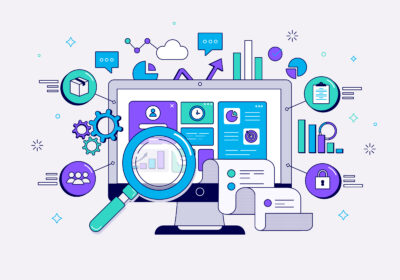The advent of voice-activated technology has revolutionised the way we interact with digital platforms. In the realm of Enterprise Resource Planning (ERP) systems, this technology has opened up new possibilities for enhancing user experience and workflow automation. This blog post will delve into the rise of voice-activated ERP and its implications for workflow automation.
Voice-activated ERP refers to ERP systems that can be operated using voice commands. This technology leverages advanced speech recognition and natural language processing algorithms to interpret and execute user commands. Workflow automation, on the other hand, involves automating manual, rule-based, and repetitive tasks in an ERP system. When combined, these two technologies can significantly enhance the efficiency and user experience of ERP systems.
Understanding Voice-activated ERP
Voice-activated ERP is a cutting-edge technology that allows users to interact with ERP systems using voice commands. This technology leverages advanced speech recognition algorithms to accurately interpret user commands and natural language processing algorithms to understand the context and intent of the commands.
The benefits of voice-activated ERP are manifold.
Firstly, it provides a hands-free and intuitive way of interacting with the system, making it particularly useful for users who are visually impaired or have physical disabilities.
Secondly, it speeds up data entry and navigation tasks, as speaking is often faster than typing or clicking. Lastly, it allows users to multitask, as they can operate the ERP system while doing other tasks.
Implementing Voice-activated ERP in your Business
Implementing voice-activated ERP in your business is a strategic process that requires careful planning and execution. Here are some steps to guide you through this process:
- Identify your objectives: The first step is to identify what you want to achieve with voice-activated ERP. This could be improving user engagement, increasing productivity, or enhancing workflow automation.
- Understand your users: Understand the needs, motivations, and behaviours of your users. This will help you design a voice-activated ERP system that resonates with them.
- Choose the right voice technology: Choose a voice technology that is accurate, reliable, and easy to use. This could involve integrating a voice recognition platform with your ERP or building custom voice recognition features.
- Design the voice-activated system: Design the voice-activated system keeping in mind the user experience. The system should be easy to use, engaging, and rewarding.
- Implement the system: Implement the voice-activated system in your ERP. This could involve integrating a voice recognition platform with your ERP or building custom voice recognition features.
- Monitor and adjust: Monitor the performance of the voice-activated system and make necessary adjustments based on user feedback and performance metrics.
Voice-activated ERP and Mobile Applications
In today’s fast-paced business environment, mobile applications have become a necessity rather than a luxury. They provide the flexibility to access business applications anytime, anywhere, thereby improving productivity and efficiency. When it comes to ERP systems, mobile applications can significantly enhance user experience and accessibility.
Integrating voice-activated ERP with mobile applications can take this to a whole new level. Users can operate the ERP system using voice commands on their mobile devices, making it even more convenient and intuitive. For instance, a user could update a record, initiate a workflow, or generate a report just by speaking to the ERP system on their mobile device.
However, integrating voice-activated ERP with mobile applications is not without its challenges. It requires careful planning and execution to ensure a seamless and intuitive user experience. Moreover, it requires robust security measures to protect sensitive business data.
Despite these challenges, the benefits of integrating voice-activated ERP with mobile applications are manifold. It provides a hands-free and intuitive way of interacting with the ERP system, improves accessibility, and allows users to operate the ERP system while on the go. Therefore, businesses should consider integrating voice-activated ERP with mobile applications to stay competitive in today’s digital age.
Security Considerations for Voice-activated ERP
As with any technology, security is a paramount concern for voice-activated ERP systems. Given that these systems handle sensitive business data, it’s crucial to have robust security measures in place to protect this data.
Potential security risks for voice-activated ERP systems include unauthorised access, data breaches, and spoofing attacks. To mitigate these risks, businesses should implement strong authentication mechanisms, encrypt sensitive data, and regularly monitor and audit system activity.
Moreover, businesses should educate users about safe practices when using voice-activated ERP systems. This includes not sharing sensitive information over voice commands and being aware of their surroundings when using voice commands.
Despite these security considerations, the benefits of voice-activated ERP systems far outweigh the risks. With the right security measures in place, businesses can leverage voice-activated ERP systems to improve user engagement, productivity, and workflow automation.
Conclusion
The rise of voice-activated ERP is a testament to the rapid advancements in technology and its potential to transform business processes. By providing a hands-free and intuitive way of interacting with ERP systems, voice-activated ERP can significantly enhance user engagement, productivity, and workflow automation.
As we look to the future, it’s clear that voice-activated ERP will continue to play a pivotal role in business processes. So why wait? Explore how Verbat can help you implement effective voice-activated ERP strategies in your business for improved workflow automation.





